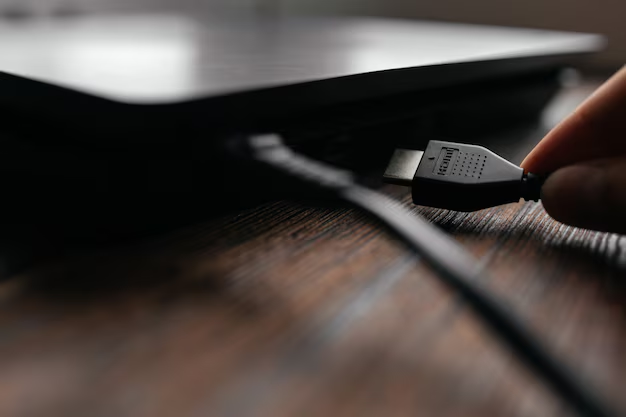Effortless Ways to Transfer Photos from Your iPhone to a USB Drive
In today’s digital age, our smartphones have become more than just a communication tool; they have turned into repositories for our memories and experiences, captured vividly in photos. However, the convenience of snapping endless pictures can quickly lead to storage issues. If you're looking to free up space on your iPhone or simply want a backup of your precious memories, transferring photos to a USB drive is a smart solution. Here’s how you can do it efficiently and effectively.
Why Transfer Photos from iPhone to USB?
Before diving into the how-to, let’s discuss why transferring photos to a USB drive is beneficial.
- Space Management: iPhones, while offering significant storage, can fill up quickly with pictures. Transferring photos frees up your device’s space, ensuring it operates smoothly.
- Backup and Security: Storing photos on a USB provides a tangible backup. Should your phone get lost, stolen, or damaged, you won’t lose treasured memories.
- Sharing and Portability: USB drives are compact and easily transportable, making them ideal for sharing photos with family or friends or for displaying them on different devices.
Essential Equipment and Preparations
What You'll Need
- USB Drive: Select one with ample storage to accommodate your photo library.
- Lightning to USB Adapter: Apple’s adapter or other compatible third-party options.
- A Computer: Mac or Windows to facilitate the transfer.
- iCloud Account (optional): For those who use iCloud Photo Library, downloads may require your credentials.
Preparing Your Devices
- Update your iPhone: Ensure your iOS is up-to-date to avoid compatibility issues.
- Free up storage space on your USB: If necessary, to accommodate all the files you plan to transfer.
Step-by-Step Guide: Transferring Photos
Method 1: Direct Transfer Using a Computer
Step 1: Connect iPhone to Computer
Using your lightning cable, connect your iPhone to your computer. If prompted, trust the computer from your iPhone settings.
Step 2: Importing Photos
On a Mac:
- Open the Photos app. Your iPhone will appear in the sidebar under Devices.
- Select the photos you wish to transfer and click Import.
On a Windows PC:
- Navigate to File Explorer > This PC. Your iPhone should appear under Devices and drives.
- Open it, then the DCIM folder, and copy the desired photo files.
Step 3: Transfer to USB
After downloading the photos to your computer:
- Insert the USB drive.
- Drag and drop or copy-paste the photos from your computer to the USB drive.
Method 2: Using a Lightning to USB Adapter
Step 1: Connect USB to Adapter
Plug your USB drive into the lightning adapter.
Step 2: Connect Adapter to iPhone
Attach the adapter to your iPhone's lightning port.
Step 3: Use the Files App
- Open the Files app on your iPhone.
- Navigate to your Photo Library.
- Select photos and use the Share option. Choose Save to Files and select the USB drive as the destination.
Additional Considerations
Use of Cloud Services
For users with an iCloud account, photos can be accessed from any connected device. Here’s how you can leverage iCloud:
- Ensure your photos are backed up on iCloud by going to Settings > [Your Name] > iCloud > Photos and toggle iCloud Photos.
- On your computer, access iCloud.com and download your photos directly to the USB drive.
Alternate Storage Solutions
Consider other cloud storage services like Google Photos or Dropbox for an additional layer of backup. These platforms also provide user-friendly apps for both iOS and desktops, simplifying the backup process.
Troubleshooting Common Issues
USB Not Detected
- Check for Compatibility: Ensure both your iPhone and adapter support the USB format and that the USB is working correctly by testing it on other devices.
- Update Software: Ensure your iOS is updated, as older versions may have compatibility issues with newer hardware.
Insufficient Space
- Clear USB Space: Delete unnecessary files or use a larger capacity USB drive.
Maintaining Photo Quality
When transferring photos, it’s vital to maintain quality:
- Use Lossless Formats: Prefer transferring files in their original formats, like HEIC for iPhone for more efficient storage without loss of quality.
- Avoid Repeated Transfers: Continuous converting and transferring could degrade photo quality. Always transfer the original when possible.
Quick Reference Summary 🤔
- Prepare: Ensure you have a functioning USB drive, the necessary adapters, and a computer if needed.
- Direct Transfer: Use a Mac or PC to copy photos directly from your iPhone to a USB.
- Adapter Method: Use Apple’s adapter for direct transfer without a computer.
- Cloud Storage: Utilize iCloud or other services for additional backups.
- Keep Updated: Regularly update your devices to avoid issues.
By understanding these various approaches, you can confidently manage your photo storage needs. Whether you're seeking to free up space, safeguard memories, or share moments with loved ones, transferring photos from your iPhone to a USB drive is a straightforward task when equipped with the right knowledge and tools. Remember, regularly backing up your photos ensures that your memories remain secure, no matter what happens to your devices.

Related Topics
- How Can I Transfer a Video From Iphone To Computer
- How Can I Transfer Apps From Iphone To Ipad
- How Can I Transfer Apps From One Iphone To Another
- How Can I Transfer Contacts From Iphone To Iphone
- How Can I Transfer Contacts From One Iphone To Another
- How Can I Transfer Data From Iphone To Android
- How Can I Transfer Data From Iphone To Iphone
- How Can I Transfer Data From Iphone To Samsung
- How Can I Transfer Files From Android To Pc
- How Can I Transfer From Iphone To Samsung